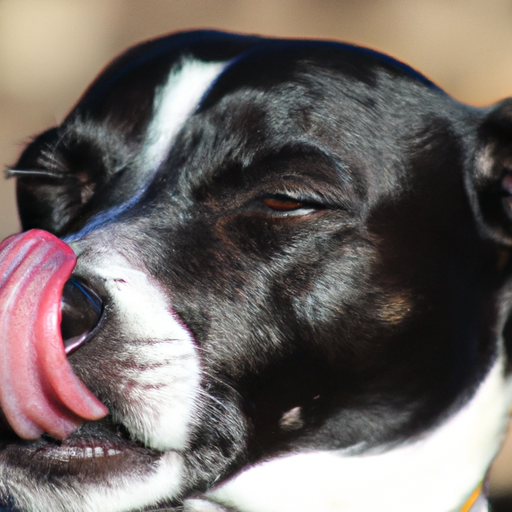Why Do Dogs Tilt Their Heads
There they are, those puppy eyes looking at you once more, but there’s something distinctly charming about this glance. Your dog’s head is tilted to one side, their ears perked up, giving you that irresistible, ‘inquisitive’ look. It makes you wonder, why on earth do they do that? “Why Do Dogs Tilt Their Heads” is an exploration into this endearing yet puzzling canine behavior. The article seeks to enlighten you on the possible motivations behind this, satisfying your curiosity while enriching your knowledge about your four-legged friend’s behavior.

Understanding Canine Behavior
Understanding canine behavior involves delving deeper into the world of domesticated dogs. This requires a closer look at their basic instincts, the importance of their need for communication, and their social structures.
Basic instincts of dogs
At their core, dogs are pack animals with ingrained instincts that have evolved over thousands of years. These basic instincts include hunting for food, protecting their pack, establishing dominance, and avoiding or confronting dangers. By understanding these instincts, you can gain a better insight into why your dog behaves the way it does.
The need for communication in dogs
Communication is crucial for dogs. They communicate with each other, and with humans, using a range of methods including vocalization, body language, and scent marking. Understanding your dog’s communication methods can enhance your relationship, and help you cater to their needs better.
Canine social structures and behavioral cues
Canine social behavior is complex and influenced by various factors such as breed, upbringing, and environment. In a typical canine social structure, there is a clear hierarchy or pecking order. Behavioral cues are a primary way dogs maintain their social structure. Sniffing, growling, baring teeth, and wagging tails all have specific meanings in the dog world.
Physical Reason behind Dogs Tilting Their Heads
One of the most adorable things that dogs often do is tilt their heads. Have you ever wondered why they do this? It turns out, there’s more than one reason.
Effect of dog’s muzzle on their field of vision
Dogs have a muzzle that extends forward from their face, which can sometimes obstruct their line of sight. When your dog tilts its head to the side, it alters the position of the muzzle, enabling them to see you or their surroundings more clearly. The head tilt may be a simple way for them to get a better view.
Role of a dog’s ear structure in sound localization
To dogs, sound is an important sense, just as sight is to humans. The structure of a dog’s ears plays a vital role in how they perceive sound. Dogs often tilt their head to adjust the position of their ears, which helps them determine the source and location of the sound more accurately.
Contribution of curiosity to head tilting behavior
And let’s not forget about dogs’ natural curiosity. Sometimes a dog might tilt its head simply because it’s intrigued or confused by new or unfamiliar sounds or stimuli, and is trying to understand what it is hearing or seeing better.
Psychological Triggers for Head Tilting
Just like humans, dogs can have psychological triggers for their behavior. Let’s delve into these in relation to the charming behavior of head tilting.
Association of head tilt with attention
Head tilting might be a gesture that your dog uses to show you that it’s paying attention to what you’re saying. Dogs have a remarkable ability to pick up on subtle cues and they’ve learned that humans respond positively when they appear attentive.
Role of anxiety or stress in head tilting
Sometimes, head tilting can also be a sign of stress or anxiety in dogs. If you notice your dog tilting its head in a seemingly stressful situation, or when exposed to unfamiliar sounds or environments, it may be feeling anxious or stressed.
Head tilting as a part of canine empathy
Dogs are empathetic creatures, and they often pick up on and mirror human emotions. If your dog tilts its head while you are speaking or showing emotion, it might be trying to empathize with your feelings.
The Impact of Breed and Physical Characteristics on Head Tilting
Like people, dogs come in all shapes and sizes. These physical disparities can influence their behavior, including head tilting.
Difference in head tilting tendencies among breeds
The breed of a dog can greatly influence its tendency to tilt its head. Some breeds are more prone to head tilting than others, particularly those with longer muzzles or bigger ears.
Role of physical characteristics like muzzle length and ear size
A dog’s physical characteristics, such as the length of its muzzle or the size of its ears, can affect its propensity to tilt its head. Dogs with longer muzzles might tilt their heads more often to adjust their field of view, while dogs with larger ears might do it to better locate sounds.
Adaptation and learned behavior
Breed characteristics might make a dog more prone to head tilting, but it could also be a learned behavior. If a dog gets positive feedback for tilting its head (like treats or praise), then it might start doing it more often.

Interpreting Different Types of Head Tilts
Now that we understand why dogs tilt their heads, let’s decode the different types of head tilts and what they signify.
Variation in head tilts and their meanings
Just as there are variations among dog breeds, there are also variations in the ways dogs tilt their heads. A slow, curious tilt can indicate interest or curiosity, whereas a quick, abrupt tilt might signify surprise or alarm.
Significance of the direction and duration of the tilt
The direction and duration of a dog’s head tilt can offer clues about what they’re feeling or thinking. For example, a dog might tilt its head to the side when trying to figure out a puzzle, but could tilt it straight back in surprise or fear.
Understanding head tilts in response to specific stimuli
The type of stimuli can often dictate a dog’s reaction, including head tilting. If you notice that your dog only tilts its head to certain sounds or in response to specific actions, it might be trying to comprehend these particular stimuli.
Connection Between Head Tilting and Health Issues
While most of the time head tilting in dogs is cute and harmless, it can sometimes be a sign of underlying health issues.
Common health issues associated with excessive head tilting
Excessive or abnormal head tilting could be indicative of health issues, such as ear infections, vestibular disease, or even brain disease. It’s important to keep an eye on your dog and note any changes in behavior.
When to seek medical advice
If your dog’s head tilt is accompanied by other symptoms like loss of balance, disorientation, rapid eye movements, or difficulty walking, it’s time to seek veterinary advice. It’s always better to be safe than sorry.
Medical treatment options for health issues causing excessive head tilting
The treatment for excessive head tilting will depend on the underlying cause. For example, ear infections might be resolved with antibiotics, while vestibular disease could require extensive therapeutic support. Therefore, a proper diagnosis is important for appropriate treatment.
Impact of Training on Dogs’ Head Tilting
Interestingly, training techniques can also impact a dog’s propensity to tilt its head.
Training techniques influencing head tilting
Certain training techniques or cues can encourage your dog to tilt its head. If you often use a specific tone of voice or hand gesture before giving your dog a command, they might start tilting their head in anticipation or excitement.
Reinforcement of head-tilting through positive feedback
Positive reinforcement, such as rewards or praise, can reinforce a dog’s head-tilting behavior. Dogs are clever creatures. If they realize that head tilting gets them treats or attention, they’re likely to do it more often.
Behavior modification and head tilts
Behavior modification techniques can also be employed to manage excessive or bothersome head tilting. A professional dog trainer or animal behaviorist could provide strategies for managing this behavior if it becomes problematic.
Role of Head Tilt in Human-Dog Interaction
Head tilting in dogs can have a significant impact on human-dog interactions. This simple gesture can be a valuable tool in communication, bonding, and social benefits.
How humans interpret head tilting
Humans often interpret head tilting as a sign that the dog is listening or acknowledging our presence, which can strengthen the bond between dog and owner.
Influence of head tilt on the bond between humans and dogs
Anyone who has owned a dog will tell you that those head tilts are a heartwarming sight. They foster a sense of affection and connection, deepening the bond between you and your dog.
Social benefits of head tilting in dogs
When a dog tilts its head, it’s often seen as endearing and sociable. This behavior can increase their likability and their ability to interact positively with humans and other dogs.
Studies and Researches on Canine Head Tilting
Scientists, animal behaviorists, and researchers are continually exploring animal behavior, including canine head-tilting.
Review of major studies on dogs’ head tilting
Major studies have researched the physical and psychological reasons for dogs tilting their heads. Most researchers agree that it’s a combination of factors, including the dog’s physical characteristics and their need to communicate and understand stimuli better.
Latest findings in canine behavior research
Recent research has made some interesting discoveries. For example, one study found that dogs were more likely to tilt their heads when listening to a familiar person speaking, suggesting that head-tilting could be a sign of recognition.
Challenges and future scope of research in this area
Despite extensive research, some aspects of canine behavior, including head tilting, remain a mystery. But with ongoing research and technological advancements, who knows what fascinating insights we may uncover in the future?
Myths and Misconceptions about Dogs’ Head Tilting
There are plenty of myths and misconceptions floating around about why dogs tilt their heads. Let’s bust a few of them.
Common misconceptions about head tilting
A commonly held belief is that dogs tilt their heads to look more adorable. While this may be a delightful by-product, it’s not the primary reason. As we explored earlier, head tilting is more about communication and sensory perception.
Realities versus myths about dogs’ behavior
The reality is that dog behavior, including head tilting, is complex and multi-faceted. It’s determined by various factors, including their breed, upbringing, environment, and individual personality.
Debunking myths about head tilting in dogs
So, the next time you hear someone claim that dogs tilt their heads only to look cute or to manipulate their humans, you can confidently debunk that myth. Armed with scientific facts, we can understand and appreciate our furry friends much better.
In conclusion, understanding a dog’s head tilting behavior can offer insight into their world. Be it an instinctive response, a communication tool, a reaction to physical characteristics, or an empathetic gesture, the cute head tilt not only makes us love our pets more but also prompts us to understand and appreciate their complex behaviors better. So, keep enjoying those head tilts. They’re just another reason why dogs are indeed our best friends.






